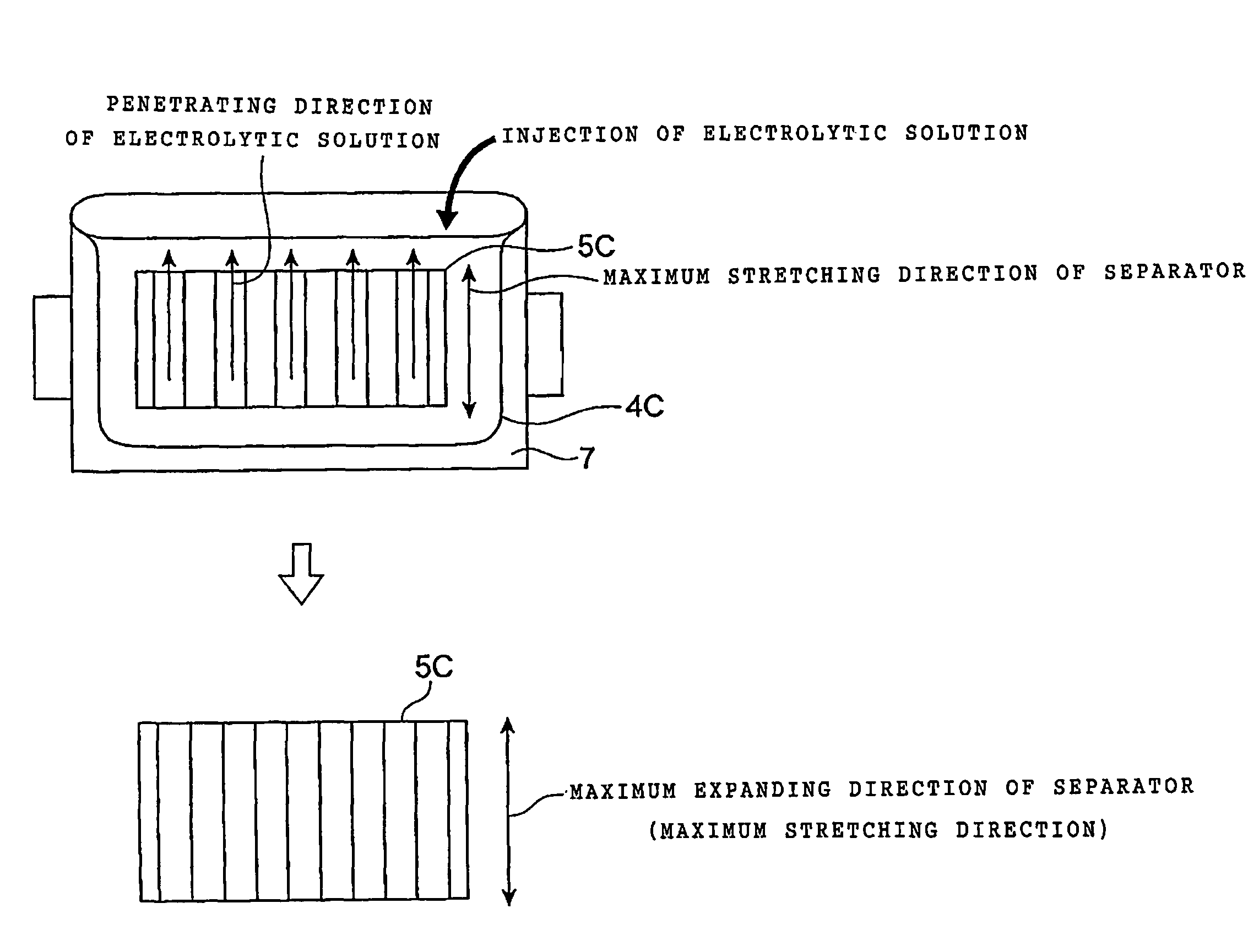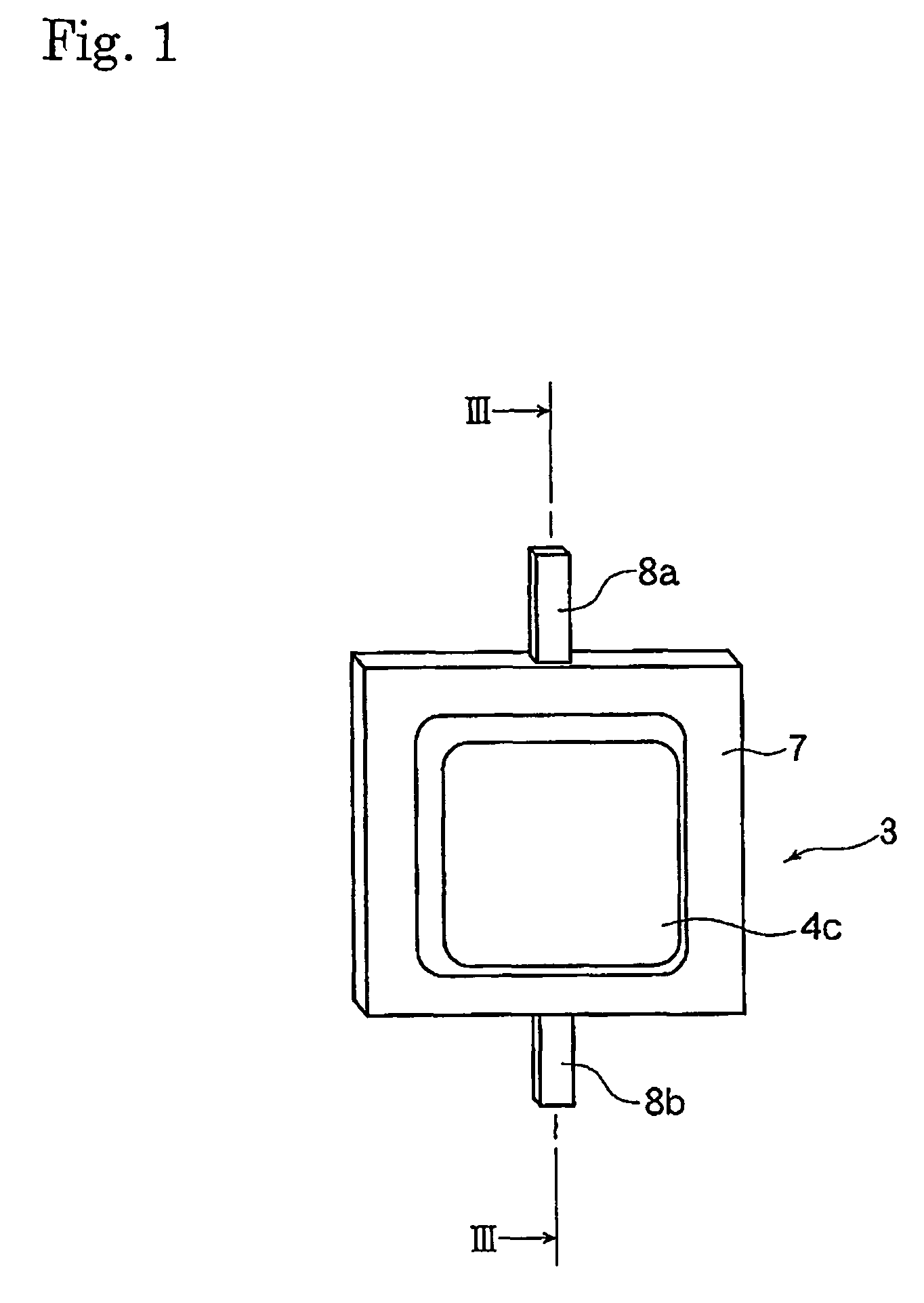Thin-type secondary battery and method of producing the same, and secondary battery module
a secondary battery and module technology, applied in the direction of secondary cell details, sustainable manufacturing/processing, flat cell grouping, etc., can solve the problems of reducing the fuel efficiency of automobiles, reducing reducing the installation space of secondary batteries. , to achieve the effect of reducing the fuel efficiency of automobiles, reducing the installation space of secondary batteries, and increasing the weight of secondary batteries
- Summary
- Abstract
- Description
- Claims
- Application Information
AI Technical Summary
Benefits of technology
Problems solved by technology
Method used
Image
Examples
embodiment 1
(Preparation of Sheet-shaped Positive Electrode)
[0074]Commercially available lithium manganate LiMn2O4 (positive electrode active material, average particle size of 10 μm), acetylene black (conductor), and polyvinylidene fluoride (binder) were mixed in a mass ratio of 89:6:5 using N-methyl pyrrolidone. The mixture was applied onto each surface of an aluminum sheet (positive electrode current collector) having a thickness of 15 μm, at a thickness of about 130 μm and the resultant was dried, to thereby prepare a sheet-shaped positive electrode. The positive electrode was cut out into a size of 14.3 cm×12.9 cm.
(Preparation of Sheet-Like Negative Electrode)
[0075]Commercially available graphite powder (negative electrode active material, average particle size of 12 μm) and polyvinylidene fluoride (binder) were mixed in a mass ratio of 93:7 using N-methyl pyrrolidone. The mixture was applied onto each surface of a copper sheet (negative electrode current collector) having a thickness of 1...
embodiment 2
[0095]The separators (4 sheets), the sheet-shaped positive electrodes (2 sheets), and the sheet-shaped negative electrodes (3 sheets) were alternately laminated in the same manner as in the method of producing the sheet-shaped secondary battery 3 of Embodiment 1. A positive electrode terminal of an aluminum foil of width 3 cm×length 4 cm×thickness 0.15 mm was bonded to the positive electrode through ultrasonic welding in a form pulled out from the side of 14.3 cm of the positive electrode so that the center of the positive electrode terminal was provided at a position of 7.15 cm from edges of the side of the positive electrode. A negative electrode terminal of a nickel foil of the same size as that of the positive electrode terminal was bonded to the negative electrode through ultrasonic welding in a form pulled out from the side of 14.8 cm of the negative electrode so that the center of the negative electrode terminal was provided at a position of 7.4 cm from edges of the side of t...
embodiment 3
[0098]Three secondary batteries 3 of Embodiment 2 were connected in parallel to form a battery pack and the battery pack was contained in a casing 2, to thereby produce a secondary battery module. FIG. 5 shows a sectional view of the secondary battery module.
[0099]In the secondary battery module of Embodiment 3, each lithium ion secondary battery (unit battery) forming the battery pack is formed to have a substantially block-shaped contour by alternately laminating a positive electrode having a positive electrode active material applied onto a metal material and a negative electrode having a negative electrode active material applied onto a metal material through a separator. The battery pack is formed by connecting two or more of the unit batteries in parallel. Unit batteries of the battery pack contained in a container main body (casing) are divided by partition walls provided in the container main body to insulate each unit battery, and are suitable for forming a high capacity se...
PUM
| Property | Measurement | Unit |
|---|---|---|
| angle | aaaaa | aaaaa |
| thickness | aaaaa | aaaaa |
| particle size | aaaaa | aaaaa |
Abstract
Description
Claims
Application Information
 Login to View More
Login to View More - R&D
- Intellectual Property
- Life Sciences
- Materials
- Tech Scout
- Unparalleled Data Quality
- Higher Quality Content
- 60% Fewer Hallucinations
Browse by: Latest US Patents, China's latest patents, Technical Efficacy Thesaurus, Application Domain, Technology Topic, Popular Technical Reports.
© 2025 PatSnap. All rights reserved.Legal|Privacy policy|Modern Slavery Act Transparency Statement|Sitemap|About US| Contact US: help@patsnap.com



